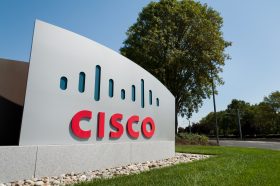SD-WAN: Gateway Drug to ARR
The software-defined wide-area networking (SD-WAN) market continues to gain momentum. A few companies are scrambling to beef up their strategies.
This week demonstrated how hot SD-WAN actually is, with news announcements from Juniper Networks, FlexiWAN, and Fortinet. I've been telling you this market would be hot since 2015. But now all of the sudden, everybody is trying to double down on SD-WAN. Why is it so popular now?
It's because SD-WAN is a gateway drug. It's the new beach-head to the enterprise customer premises. And once you are there, you have the potential to build a platform to sell enterprises all manner of networking and IT services from the cloud. And you can charge for those services as an annual software or cloud licensing fee, rather than a perpetual license, which gives you a nice revenue stream. In the hunt for subscription software revenue and Annual Recurring Revenue (ARR), this is the battle for future enterprise networking services -- and more.
Why ARR Is All the Rage
ARR is all the rage in Silicon Valley these days. If you are a CEO not talking about ARR, you don't have credibility. The idea is to move beyond the paradigm of selling discrete products such as networking devices (boxes) or even a perpetual software license and then move into the business of annual software and services subscriptions. Because a software license is sold as an annual operating expense, it's also easier for enterprises to buy. And Wall St. likes it better too, because it gives your company a better valuation.
One of the sources of the ARR meme that has taken over venture-capital and CFO offices is Tien Tzuo's excellent book, Subscribed. This technology leadership tome deconstructs the subscription revolution and how it has transformed businesses ranging from software to media.
Some great examples of companies that have made excellent transitions to ARR include Adobe, which was one of the earlier enterprise companies to shift from a shrink-wrapped software to a cloud model, and Microsoft, which has put its entire software portfolio in the cloud.
That's why SD-WAN is so much fun! Not only can you generate more press releases with buzzworthy phrases, but it may actually boost the value of your company too.
Replacing Devices With Software
SD-WAN has shifted the networking story from hardware or "boxes" to a software-from-the-cloud story. Essentially, SD-WAN takes legacy hardware networking and software services, virtualizes them, puts them in the cloud, and then offers the customer an access point, or customer premises equipment (CPE), to access these new virtualized services. This can be priced as an annual software and services subscription.
Presto! Your previously boring networking hardware and software business is now a sexy cloud software business.
Many of the services now migrating to SD-WAN used to be sold as discrete hardware elements, including the following:
- Load balancers
- Firewalls
- WAN optimization
- WiFi controllers
- Routers
All of these networking feature sets are now being bundled into SD-WAN services that can either be accessed directly from the cloud or consolidated on a single, standardized customer premises equipment (CPE).
This is obviously a threat to all the "box makers" that specialized in the functions above. They are now scrambling to come up with their software-from-the-cloud story. Now, of course, the box makers aren't just sitting still -- they're looking to migrate some of their value to the cloud.
For example, just this week, Juniper came out with a new strategy for its Contrail orchestration software that puts management of networks in the cloud. Juniper missed the early car on the SD-WAN train by not coming up with a discrete SD-WAN product, but now it's trying to catch up. Cisco, on the other hand, made several acquisitions to tie together an SD-WAN strategy, including Viptela and Meraki, and is now on a campaign to sell SD-WAN software to generate ARR.
This has helped push Cisco's stock price up. CEO Chuck Robbins has pounded away at the migration-to-software story, even though progress has been a little slow. He's been good at communicating the strategy to Wall St. Cisco wants to start using its devices and networking footprint to sell additional annual software and services ranging from SD-WAN to cybersecurity.
Can Box Makers Executive on ARR?
The question that remains for the traditional network hardware players is: Can they use SD-WAN to navigate this difficult transition? In addition, the architectural differences on SD-WAN platforms are vast, so it will require elegant engineering rather than just simply converting hardware appliances into virtual functions. This is a topic that was recently hit on in our interview with Shlomo Kramer, who believes you can't just plug in virtual functions -- you need to design your cloud platform from the ground up.
This will be the next phase of the great SD-WAN battle -- which I believe will create new winners with billions of dollars in revenue. The legacy companies that wait longest to transform their box business model into cloud software will lose, and the most innovative of the new networking cloud companies are poised to gain major market share with successful SD-WAN cloud offerings.





